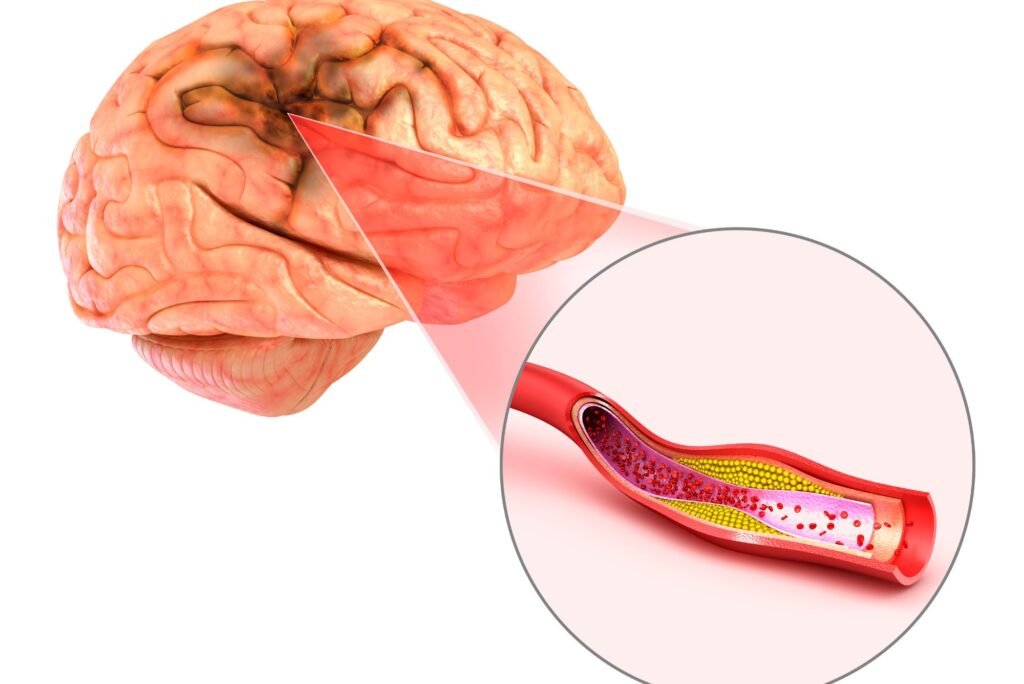Stroke
Stroke
Stroke: Demystifying a Brain Attack and Its Impact
A stroke, often referred to as a cerebrovascular accident (CVA), is a medical emergency that occurs when blood flow to a part of the brain is interrupted. This interruption can be caused by either a blockage in an artery (ischemic stroke) or bleeding within the brain tissue (hemorrhagic stroke). Deprived of the oxygen and nutrients it needs, brain tissue starts to die, leading to permanent damage and a range of potential functional impairments. Strokes are a leading cause of death and disability worldwide, highlighting the critical need for public awareness, prompt recognition, and effective treatment strategies.
Understanding the Different Types of Strokes:
Ischemic Stroke: This is the most common type of stroke, accounting for roughly 87% of all cases. It occurs when a blood clot blocks an artery supplying blood to the brain. This blockage can be caused by various factors like:
Atherosclerosis: The buildup of fatty deposits (plaque) in the arteries, narrowing the passage and increasing the risk of clot formation.
Blood clots: Clots can form in the heart due to conditions like atrial fibrillation or travel from other parts of the body to lodge in the brain’s arteries.
Hemorrhagic Stroke: This type of stroke happens when a weakened blood vessel in the brain ruptures and bleeds into the surrounding tissue. This bleeding puts pressure on brain cells, damaging them and disrupting their function. Risk factors for hemorrhagic stroke include:
- High blood pressure: Uncontrolled hypertension significantly increases the risk of blood vessel rupture.
- Aneurysms: Balloon-like bulges in weakened blood vessel walls are prone to rupture and bleeding.
- Blood-thinning medications: While crucial for certain conditions, these medications can increase the risk of bleeding, including in the brain.
Recognizing the Warning Signs of a Stroke:
Acting quickly and seeking immediate medical attention is critical in stroke cases. Recognizing the early signs and symptoms of a stroke can make a significant difference in treatment outcomes and potential recovery. Remember the acronym BE FAST to identify potential stroke symptoms quickly:
- Balance problems: Sudden difficulty maintaining balance or coordination, feeling unsteady or like you might fall.
- Eyesight changes: Sudden vision problems in one or both eyes, blurred vision, or complete loss of vision.
- Facial drooping: One side of the face drooping or feeling numb, making it difficult to smile or frown evenly.
- Arm weakness: Sudden weakness or numbness in one arm or leg, often on one side of the body.
- Speech difficulty: Difficulty speaking or understanding speech, slurring words, or experiencing difficulty finding the right words.
- Time to call 911: If you experience any of these symptoms, do not hesitate to call emergency services immediately. Every minute counts when it comes to stroke treatment.
Treatment Options and the Road to Recovery:
While time is of the essence, treatment options for stroke depend on the type and severity of the stroke. Early intervention is crucial for minimizing brain damage and improving the chances of a successful recovery. Here’s a glimpse into the potential treatment approaches:
Ischemic Stroke:
- Thrombolysis (clot-busting medication): This medication aims to dissolve the blood clot and restore blood flow to the brain tissue. However, it is only effective within a limited timeframe, typically within 3-4.5 hours of stroke onset.
- Endovascular thrombectomy: This minimally invasive procedure involves using a catheter inserted through an artery to reach the clot and remove it directly. This technique can be used in some cases beyond the time window for thrombolysis.
Hemorrhagic Stroke:
- Medications: Medications may be used to control blood pressure, prevent further bleeding, and reduce swelling in the brain. This helps minimize further damage and stabilize the patient’s condition.
- Surgery: In specific cases, surgery may be necessary to repair a ruptured blood vessel or remove blood clots that are causing significant pressure on brain tissue.
Living Beyond Stroke: Rehabilitation and Support:
Following the initial treatment phase, stroke survivors often require rehabilitation to regain lost function and improve their quality of life. This can involve various therapies, including:
- Physical therapy: Helps individuals regain mobility, improve coordination, and relearn daily living skills.
- Occupational therapy: Focuses on helping individuals regain independence in performing daily activities like self-care, dressing, and managing household tasks.
- Speech therapy: Addresses communication difficulties like aphasia, improving speech clarity and language skills.
- Cognitive rehabilitation: Helps individuals regain cognitive abilities affected by the stroke, such as memory, attention, and problem-solving.
If you are experiencing any concerning symptoms that might suggest a neurological disorder, seeking professional medical evaluation from a qualified healthcare professional is crucial for proper diagnosis, treatment guidance, and potentially connecting you with valuable support resources.

Book an Appointment
Physiotherapy: Your Path to Pain Relief
Physiotherapists are movement experts who can help manage and reduce pain. Through manual therapy, exercise programs, and education, they can improve your mobility and function, empowering you to live an active, pain-free life.
